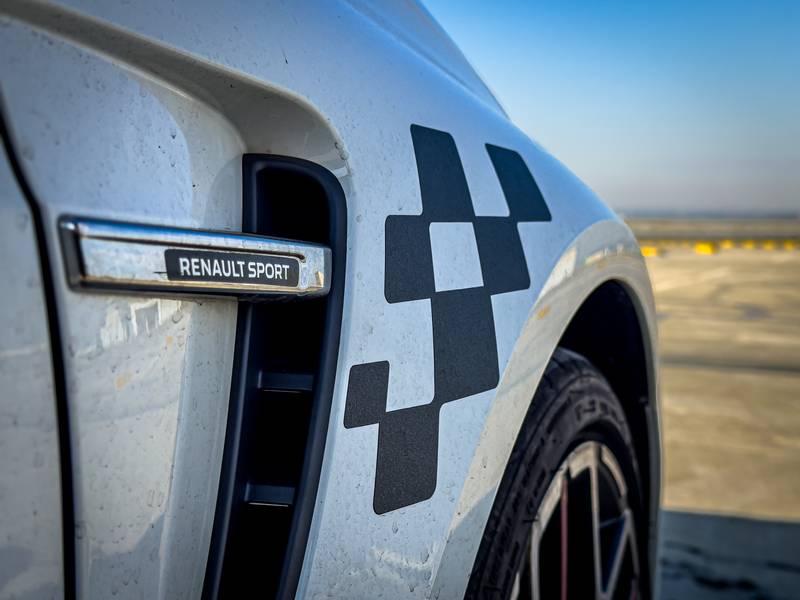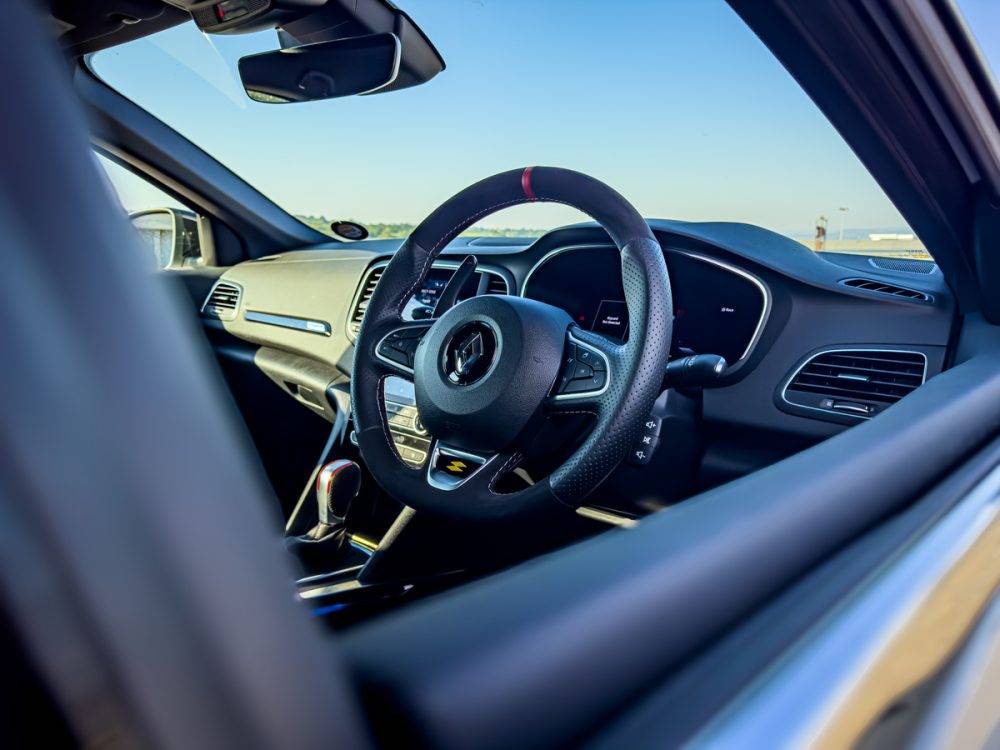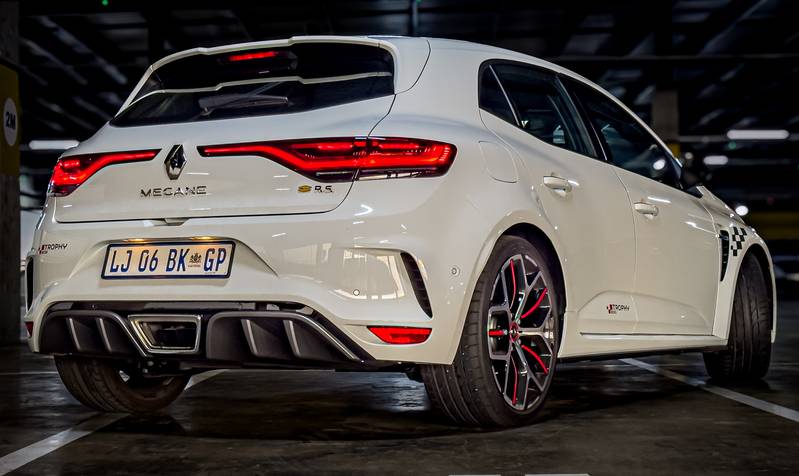Dying breed: The Renault Megane RS Trophy hot hatch is a hard ride, not a daily commuter, with plenty of power and a beautiful exhaust sound.
Not too long ago, hot hatches were much more readily available and accessible.
This availability had to do with the fact that there were more to choose from in a variety of price and size categories — think the Toyota Conquest RSi and Opel Kadett Superboss from the 1980s; the Fiat Uno Turbo, VW Golf VR6 and Opel Astra TS from the 1990s.
Accessibility was influenced by the price and relative affordability of hot hatches.
That has all changed, and as pricing and demand have gone in opposite directions, our access to hot hatches has, sadly, diminished. Most are priced over the R1 million mark — the ones below that can be counted on one hand.
Continuing on that sad note, this review of the Renault RS 300 Trophy will be the last we ever do of a car bearing that name, specifically with the RS acronym.
The RS has officially been laid to rest after Renault’s decision to move its sports-car business under the Alpine umbrella. A sub-brand that was born in 1976 has come to an end, as has one of the great hot hatch names, the Megane RS.
A quick history lesson? Renault Sport was created by merging two companies, Alpine and Gordini Racing, as a division within Renault to manage and build on its motorsport exploits. Initially it focused on racing cars for various disciplines including rallying, Le Mans, Touring Cars and, of course, Formula 1.
A few legendary road car names have popped up over the decades. The Renault 5 Turbo is perhaps the most famous but it wasn’t until 1996 that Renault placed an RS badge on a car named the Renault Sport Spyder. It was an out-there two-seat roadster but it still made a statement.
In 1999, South Africa saw the Renault Clio RS, the first of the marque’s onward raft of hot little hatches that you and I could buy.
From this point on, they kept coming, including that bonkers mid-engined 2001 Clio V6 hatch and then, in 2004, we saw the first Megane RS.
This was introduced to a market that was dominated by the VW GTi and Audi S3 of the time, offering a similarly powered, or more powerful, hot hatch for less money. Dishing out 165kW to the front wheels, the Megane RS had arrived.
Fast forward two decades and I am standing beside the last Megane RS version to grace South African shores — this 300 Trophy.


At the time of writing, the last Megane RS Ultime had just rolled off the production line, a limited-edition run-out model of only 1 976 units. Unfortunately, none of these will make their way to South Africa, which makes the vehicle on these pages quite exclusive.
Offered in yellow, white or orange, this final version of the Megane RS is everything a modern hatch should be.
Flared wheel arches, 19-inch Jerez Diamond black alloy wheels, race-car-inspired stickers and that central, trapezoidal exhaust outlet are enough visual cues to leave you in no doubt this RS is serious about one thing— going around corners fast.
The RS is built with a cup chassis, Torsen limited-slip differential and 4Control rear-wheel steering. This technology, combined, makes the RS Trophy one of the sharpest-handling hatches we’ve driven, with precise steering and an ability to change direction or sit into high-speed turns unmatched in its segment.
At low speeds, rear-wheel steering works in the opposite direction to the front wheels, rotating the car faster. At high speeds, the rear wheels turn in the same direction as the front wheels, aiding lateral grip.
It’s a system that takes a bit of getting used to but it works to the desired effect.
I have driven the RS on a few occasions and I remain impressed at how good a sports car this is. Nothing in the segment will rotate around a hairpin bend with as much control and poise as the RS Trophy. It’s simply that good.
Aside from the chassis and cornering abilities, the drivetrain is stunning. With 221kW and 420Nm of torque, the Renault RS is powerful enough, even within the mix of rivals that offer much more power.
Its allure lies in the fact that you don’t need to be in high digits on the speedometer to feel connected and excited by this car. It feels emotional and thrilling even at lower speeds but with an ability to let loose with manic precision should you want it.
The ride is hard. It isn’t a potter-around-town kind of product but that’s what it is — the hardest and sharpest Megane RS you can have here in SA, with an exhaust soundtrack that is beautiful to experience. By our reckoning, it sounds better than a GTi or a Golf R. Fruity!

The EDC dual-clutch automatic transmission is also brilliant, if a little jerky at lower speeds. If any criticism can be levelled at the RS, when comparing it to some of its modern rivals, it is that it isn’t as friendly to run as a daily — such is its temperament, always raring to go harder —and not as comfortable to drive on the mundane, daily commute.
Saying goodbye to the RS brand means we also say goodbye to petrol-powered performance cars from Renault. Under Alpine, all sports cars will be powered by electricity, and that means no more turbo-boost noise, no more crackling exhaust sound and no more running to the red line in every gear before snapping into the next one.
On a personal note, the RS brand is responsible for some of the most memorable and career-defining moments of my life.
I have spent a lot of time behind the wheel of so many Megane RS models over the years, including some of its race cars, single-seat Formula One cars and, yes, a once-in-a-lifetime moment at the helm of a 2005 V10 F1 car.
If you can get your hands on this RS, I’d suggest you do so. There aren’t many on the road, and that is guaranteed not to change, so you’d be driving one of the last hot hatches of its kind from a company that does know a thing or two about making them.
Au revoir, RS.